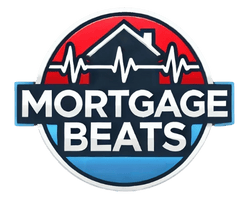Understanding Fixed-Rate Mortgages
Fixed-rate mortgages represent the traditional approach to home financing, offering stability and predictability throughout the loan term. With this mortgage type, the interest rate remains constant from the first payment through the final payment, regardless of broader market fluctuations. This consistency allows borrowers to budget precisely for their housing costs year after year, providing financial security particularly valuable during periods of economic uncertainty or rising interest rates.
The most common fixed-rate terms are 15-year and 30-year mortgages, though other terms are occasionally available. The 30-year fixed mortgage typically offers the lowest monthly payments by spreading the repayment over three decades, while the 15-year version features higher monthly payments but significantly less interest paid over the loan’s lifetime. Both options appeal to homeowners who prioritize payment stability and plan to remain in their homes long-term.
NorCal Real Estate & Financial Service frequently guides clients toward fixed-rate mortgages when their primary concern is payment predictability. Their advisors explain how these loans provide protection against future interest rate increases, making them particularly suitable for buyers who expect to stay in their homes beyond the initial fixed period of comparable adjustable-rate products.
Understanding Adjustable-Rate Mortgages
Adjustable-rate mortgages, commonly called ARMs, feature interest rates that change periodically based on fluctuations in a specified financial index. These loans typically begin with an initial fixed-rate period often 3, 5, 7, or 10 years during which the rate remains constant. Following this introductory period, the rate adjusts at predetermined intervals, usually annually, based on the movement of the chosen index plus a fixed margin established at loan origination.
ARM structures include caps that limit how much the interest rate can change both at each adjustment period and over the life of the loan. These protective features prevent payment shock from drastic rate increases. Common ARM variations include the 5/1 ARM (fixed for five years, then adjusts annually) and the 7/1 ARM (fixed for seven years, then adjusts annually), with the first number indicating the fixed period and the second indicating how frequently adjustments occur thereafter.
The mortgage professionals at NorCal Real Estate & Financial Service carefully explain ARM mechanics to clients, ensuring they understand both the initial benefits and long-term considerations. Their detailed explanations help borrowers evaluate whether the potential savings during the initial fixed period justify the uncertainty of future rate adjustments.
Key Structural Differences Between ARM and FRM
The fundamental difference between these mortgage types lies in interest rate behavior. Fixed-rate mortgages maintain the same interest rate throughout the entire loan term, providing complete predictability. Adjustable-rate mortgages start with a fixed rate for a specified period, then transition to variable rates that change with market conditions. This structural difference creates contrasting risk profiles and financial implications for borrowers.
Payment structures also differ significantly between the two loan types. With fixed-rate mortgages, principal and interest payments remain identical throughout the loan term (though escrow payments for taxes and insurance may change). ARM payments remain stable during the initial fixed period but can increase or decrease following each adjustment after the initial period concludes. This variability introduces uncertainty that some borrowers find uncomfortable despite potential initial savings.
NorCal Real Estate & Financial Service helps clients analyze these structural differences in the context of their financial situations. Their side-by-side comparisons show exactly how each mortgage type would perform under different interest rate scenarios, providing clarity about potential future outcomes based on current market projections.
Historical Performance and Rate Trends
Historical mortgage rate data reveals interesting patterns about how fixed and adjustable rates have performed over decades. During periods of declining interest rates, ARM borrowers often benefited significantly from falling payments after their initial fixed periods. Conversely, during periods of rising rates, fixed-rate borrowers enjoyed protection while ARM holders faced increasing payments.
The 1980s provided a dramatic example of ARM risk when rates spiked dramatically, causing payment shocks for borrowers with adjustable mortgages. More recently, the period following the 2008 financial crisis saw rates decline to historical lows, creating advantageous conditions for ARM borrowers. These historical patterns demonstrate that the optimal choice between fixed and adjustable rates often depends on the broader interest rate environment at the time of selection.
NorCal Real Estate & Financial Service incorporates historical analysis into their mortgage recommendations, helping clients understand how different economic conditions might affect their loan choice. While past performance doesn’t guarantee future results, this historical context provides valuable perspective when evaluating current options.
Initial Costs and Payment Comparisons
Adjustable-rate mortgages typically offer lower initial interest rates compared to fixed-rate mortgages, creating immediate payment savings. This rate differential, sometimes called the “teaser rate,” can make ARMs particularly attractive during the initial fixed period. The savings can be substantial, especially for larger loans where even a half-percentage point difference translates to significant monthly payment reductions.
Lenders price ARMs with lower initial rates to compensate borrowers for accepting future interest rate uncertainty. This discount reflects the risk transfer from lender to borrower regarding future rate movements. The exact differential varies based on market conditions, but typically ranges between 0.5% and 2% lower than comparable fixed-rate offerings during the initial fixed period.
NorCal Real Estate & Financial Service creates detailed cost comparisons showing clients exactly how much they would save monthly and annually with an ARM during the initial fixed period versus a fixed-rate mortgage. They also project how those savings might change if interest rates rise after the initial period, providing a comprehensive financial picture for informed decision-making.
Risk Assessment and Tolerance Considerations
Fixed-rate mortgages eliminate interest rate risk for borrowers, providing complete payment predictability regardless of market conditions. This comes at the cost of potentially higher initial payments compared to ARMs. Borrowers who select fixed-rate mortgages essentially purchase insurance against rising rates, paying a premium in the form of higher initial rates for this protection.
Adjustable-rate mortgages transfer interest rate risk from lenders to borrowers, offering lower initial rates in exchange for accepting uncertainty about future payments. This arrangement benefits borrowers when rates remain stable or decline but can prove costly if rates increase significantly. ARM borrowers must comfortable with possible payment increases and have financial flexibility to handle higher payments if rates rise.
NorCal Real Estate & Financial Service conducts thorough risk assessment interviews with clients to determine their appropriate risk tolerance. Their questionnaires help identify whether clients prioritize payment certainty or initial savings, and whether their financial situation could accommodate potential payment increases from an ARM in the future.
Ideal Candidates for Fixed-Rate Mortgages
Fixed-rate mortgages particularly suit borrowers who plan to remain in their homes long-term and value payment stability above potential savings. Homeowners who expect their income to remain relatively fixed, such as retirees or those in stable careers, often prefer the predictability of fixed payments. These borrowers typically prioritize budget certainty over optimizing for possible interest rate movements.
First-time homebuyers who are stretching their budgets to purchase a home often benefit from fixed-rate mortgages because they eliminate the risk of payment increases that could make their homes unaffordable. Similarly, borrowers who would struggle to make higher payments if interest rates rise should generally choose fixed-rate options to protect against this possibility.
NorCal Real Estate & Financial Service often recommends fixed-rate mortgages for clients who express anxiety about potential payment increases or who have experienced financial hardship from variable payments in the past. Their advisors recognize that psychological comfort with one’s mortgage payment has real value beyond pure mathematical calculations.
Ideal Candidates for Adjustable-Rate Mortgages
Adjustable-rate mortgages often work well for borrowers who expect to sell their homes or refinance before the initial fixed period ends. These borrowers can enjoy the lower initial rates without facing potential rate increases later. Common examples include homeowners who anticipate relocating for career opportunities, those purchasing starter homes they expect to outgrow, or real estate investors planning short-term holdings.
High-income borrowers with significant financial flexibility can also be good ARM candidates because they can absorb potential payment increases if rates rise. These borrowers might prefer to accept interest rate risk in exchange for lower initial payments, investing the savings elsewhere for potentially higher returns.
NorCal Real Estate & Financial Service helps clients evaluate whether their specific circumstances make them good candidates for adjustable-rate mortgages. Their detailed questionnaires assess factors like expected home tenure, financial flexibility, and risk tolerance to determine if an ARM aligns with the client’s overall financial strategy.
Conversion and Refinancing Options
Some adjustable-rate mortgages include conversion options that allow borrowers to switch to a fixed rate during specified periods, usually for a fee. This feature provides a middle ground, offering lower initial rates with the option to lock in a fixed rate later if market conditions change or if the borrower’s circumstances evolve. Conversion terms vary significantly between lenders, so careful comparison is essential.
Refinancing represents another strategy for ARM borrowers to consider if rates begin rising. By refinancing to a fixed-rate mortgage before their adjustable period begins, borrowers can potentially capture savings during the initial fixed period while avoiding future rate uncertainty. This strategy requires careful timing and understanding of refinancing costs versus potential savings.
NorCal Real Estate & Financial Service helps clients understand these options and their associated costs. Their advisors explain conversion features during the loan selection process and monitor market conditions to identify optimal refinancing opportunities for clients with adjustable-rate mortgages.
Making the Final Decision: A Strategic Approach
The choice between fixed and adjustable-rate mortgages ultimately depends on individual circumstances, risk tolerance, and market conditions. Borrowers should consider their expected time in the home, financial flexibility, and comfort with payment uncertainty. There’s no universally correct answer only what works best for each borrower’s unique situation.
Current interest rate trends and projections should inform but not dictate the decision. While it’s tempting to try to predict rate movements, even experts struggle with interest rate forecasting. Most borrowers should base their decision primarily on their personal circumstances rather than attempting to time the market.
NorCal Real Estate & Financial Service takes a comprehensive approach to this decision, helping clients evaluate all relevant factors through structured analysis. Their mortgage advisors provide the information and perspective needed to make confident choices aligned with each client’s financial goals and personal comfort level.
Conclusion
The fixed versus adjustable-rate mortgage decision requires careful consideration of financial objectives, risk tolerance, and personal circumstances. Fixed-rate mortgages offer payment stability that benefits long-term homeowners and those with fixed budgets, while adjustable-rate mortgages provide initial savings that may benefit mobile homeowners or those with financial flexibility.
NorCal Real Estate & Financial Service excels at helping clients navigate this important decision through personalized analysis and expert guidance. Their comprehensive approach ensures borrowers select mortgage products that align with both their current needs and long-term financial goals.
Whatever mortgage type you choose, understanding the implications of that decision puts you in control of your financial future. With proper guidance and careful consideration, you can select the mortgage product that best supports your homeownership journey while managing risk appropriately.
Ready To Get The Best Financial Advise, Email us at: Chris@mortgagebeats.com



